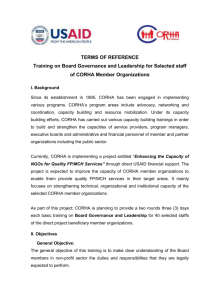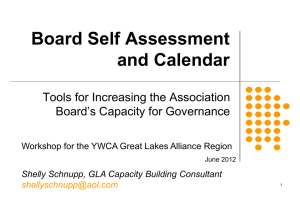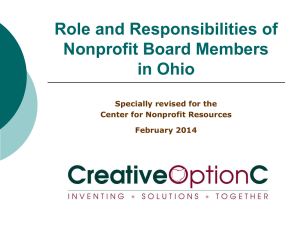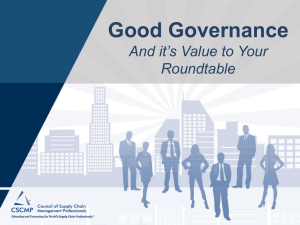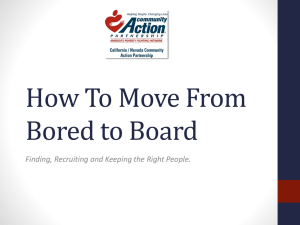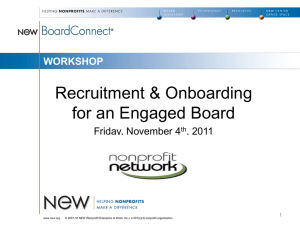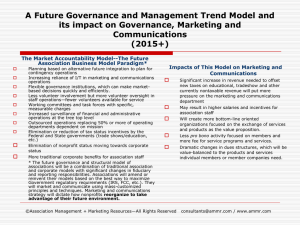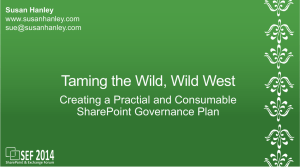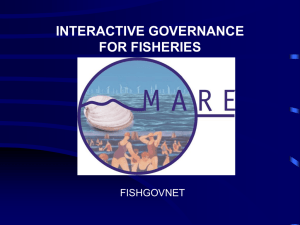Strengths and Weaknesses of the Current Model
advertisement
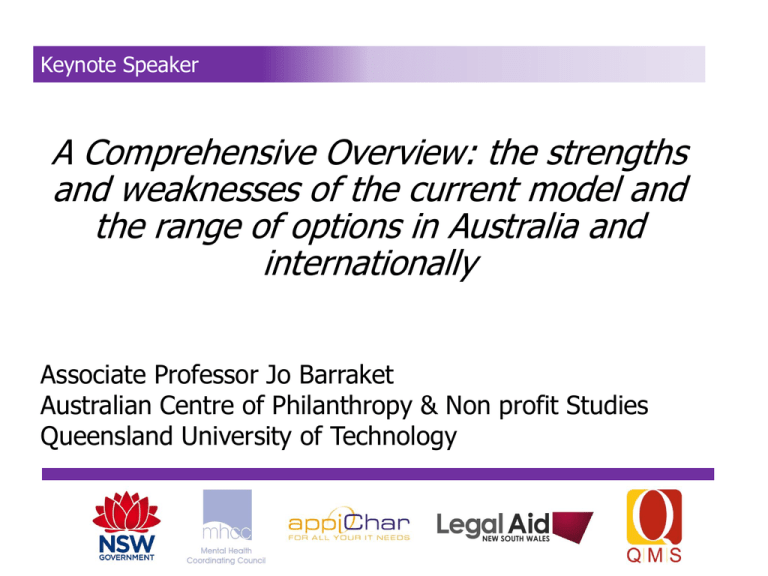
Keynote Speaker A Comprehensive Overview: the strengths and weaknesses of the current model and the range of options in Australia and internationally Associate Professor Jo Barraket Australian Centre of Philanthropy & Non profit Studies Queensland University of Technology Community Sector Governance: Strengths, Weaknesses, & Alternatives Jo Barraket, The Australian Centre for Philanthropy and Nonprofit Studies What we know about nonprofit governance • Board effectiveness → organisational effectiveness • No single ‘best model’ of governance • Operating environment significantly influences governance choices and evolution • Emphasis has been on organisational governance rather than NFP contributions to governance more widely Different perspectives on governance • Functional – focus on instrumental functions of board, management and other stakeholders • Interpretive – focus on board as ‘sense makers’ of organisation • Political – focus on relations of power within boards and between boards and other stakeholders Australian Nonprofit Board Composition – the available evidence • Predominately volunteers • Predominately non-executive • Predominately women (dependent on form of incorporation) • Predominately 40-65 years old • Over-representation of professionals • Larger on average than for-profit boards Importance and Competence in Board Functions Source: Nicholson et al 2008 Current Approaches to Governance Common characteristics Differences Board has fiduciary responsibilities Nature of constituent engagement/representation Funder compliance – upward accountabilities Relationship between board and CEO/staff Board typically elected by membership or constituents Roles of board/CEO in relation to strategic and operational development Distribution of decision-making power Presumed function of boards Strengths & Opportunities of Current Approaches • • • • Connectedness to citizenry (sometimes!) Diversity and adaptation to context Access to embedded network resources Relatively strong knowledge of management and legal responsibilities (mostly selfreported) • Giving voice to collective human aspirations Weaknesses & Challenges of Current Approaches • • • • • • Relatively high board turnover Impacts of market models of governing Growth in compliance culture Lack of incentives for participation (?) Demographic and technological changes Limited engagement with parts of the citizenry Alternative Models of Governance Model Features Strengths/Weaknesses Policy governance Emphasis on board responsibility for strategy Clear role definition/lack of connectedness of board to operations, lack of innovation Constituent board Emphasis on board members as representatives of constituency Constituent control/lack of strategic focus & role clarity Entrepreneurial board Emphasis on output efficiency through innovation/market orientation Focus on organisational business/mission drift & emphasis on short-term gain Emergent cellular model Emphasis on distributed networks and continuous evolution Highly adaptive/requires high engagement & coordination Source: Bradshaw et al, no date Conclusions • ‘Strengths’ & ‘weaknesses’ are relative and contingent on what we think community sector organisations are for • Operating context and organisational purpose matter • No ideal model, but core functions • Governance considerations need to include questions about: – Composition – Function – Role and purpose Resources for Board Self-Assessment ACPNS Developing Your Board Wiki https://wiki.qut.edu.au/display/CPNS/DYB+Home References • • • • • Bradshaw, P., Hayday, B., Armstrong, R., Levesque, J., Rykert, L. (no date) Nonprofit Governance Models: Problems and Prospects http://www.aota.org/Governance/ProceduralAdHoc/Handouts/Model.aspx accessed 17/11/10 Hough, A., McGregor Lowndes, M. & Ryan, C. (2006) ‘The Training Grounds of Democracy? Social Trends and Nonprofit Governance’ Working Paper No. CPNS31, Centre of Philanthropy and Nonprofit Studies, Queensland University of Technology, Brisbane. Nicholson, G., Newton, C. & McGregor Lowndes, M. (2008) Governance training needs in Community Organisations, Just Policy 49, December 2008: 5-12. Steane, P. And Christie, M. (2001) ‘Nonprofit Boards in Australia: a distinctive governance approach’, Corporate Governance 9 (1): 48-58. Woodward, S. And Marshall, P. (2004) A better framework: reforming not-for-profit regulations Centre for Corporate Law and Securities Regulation, University of Melbourne, Melbourne Morning Tea Morning Tea will be served in the lounge area directly behind the auditorium The next conference session will begin at 11:00am
